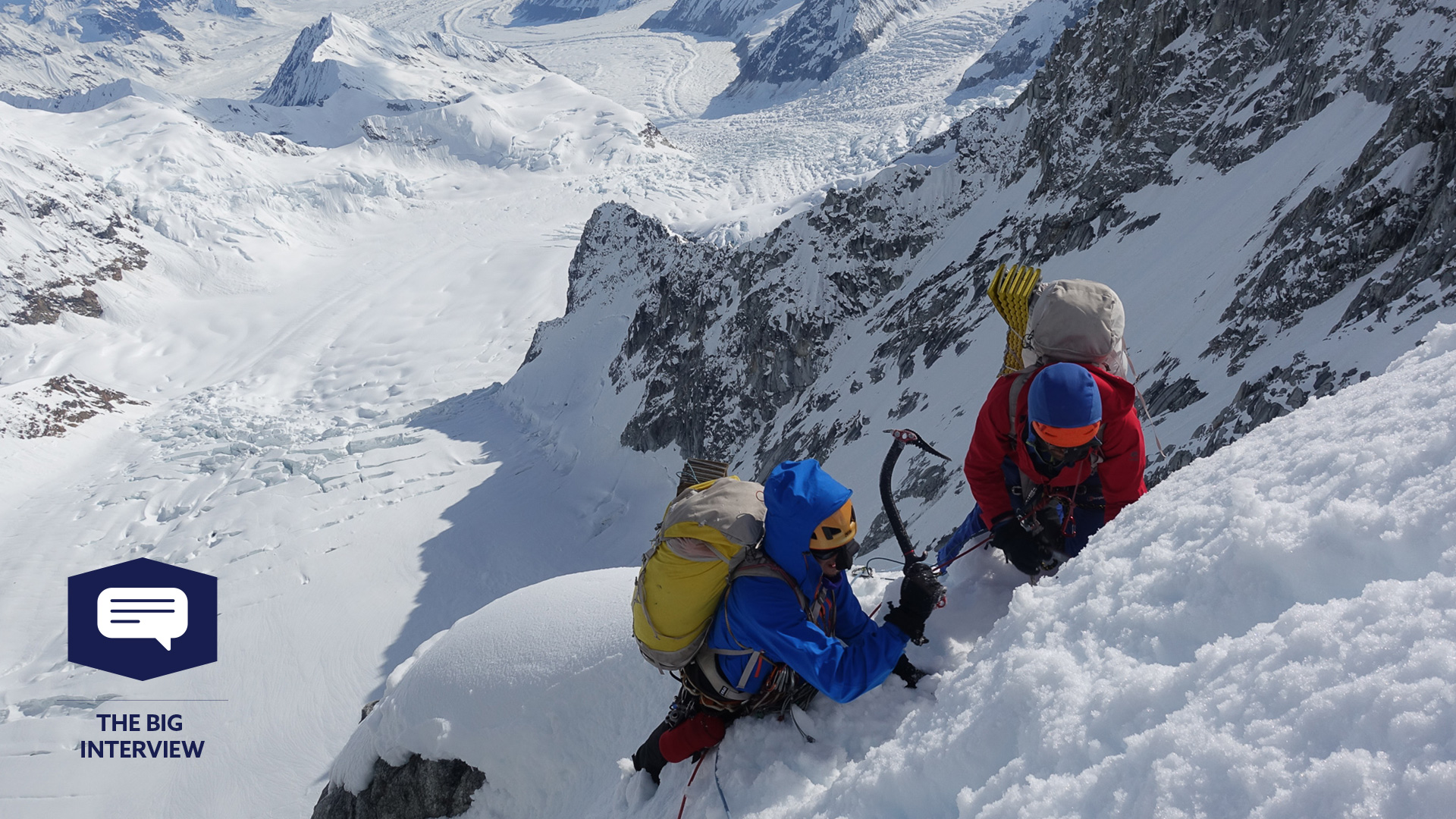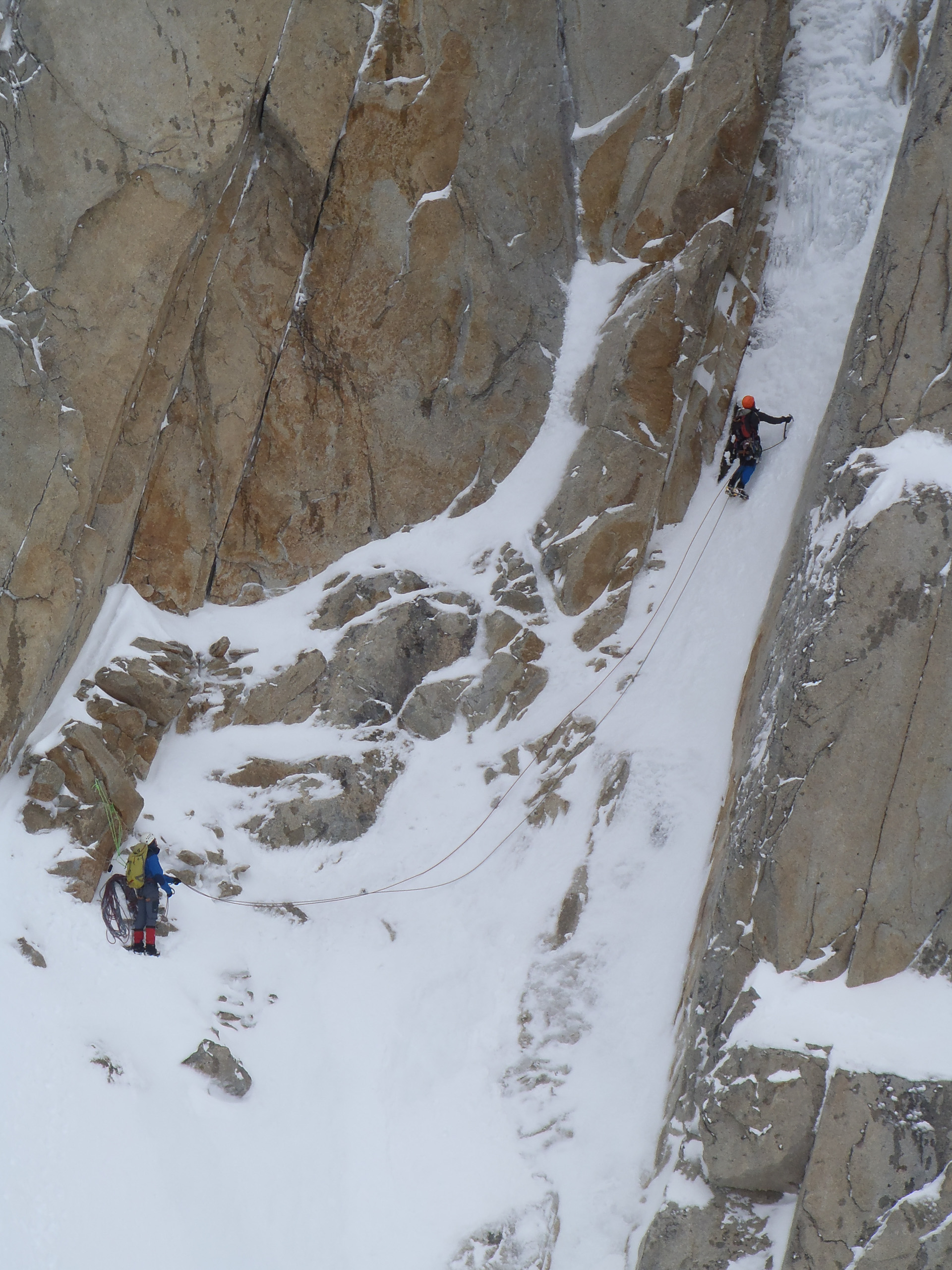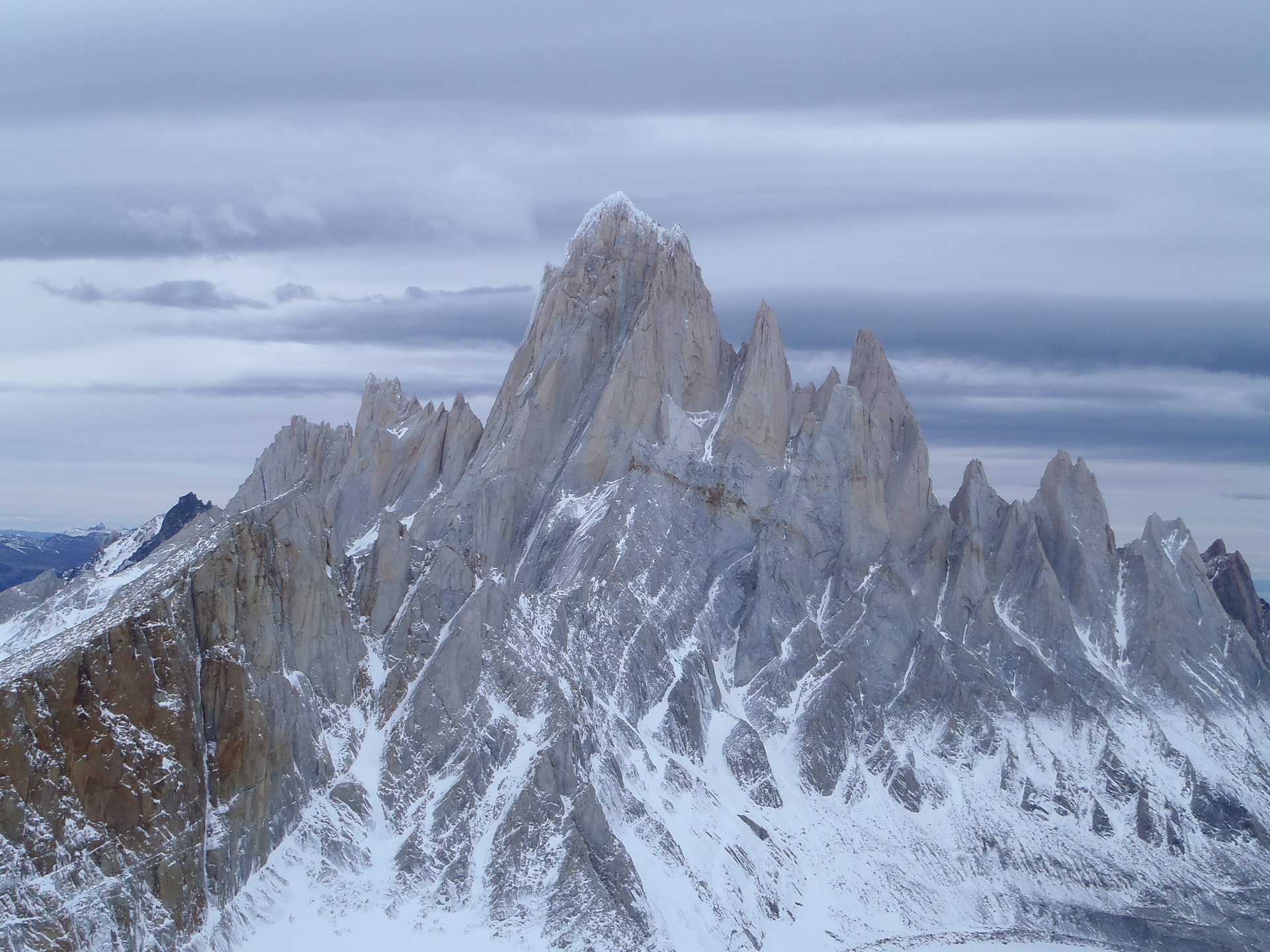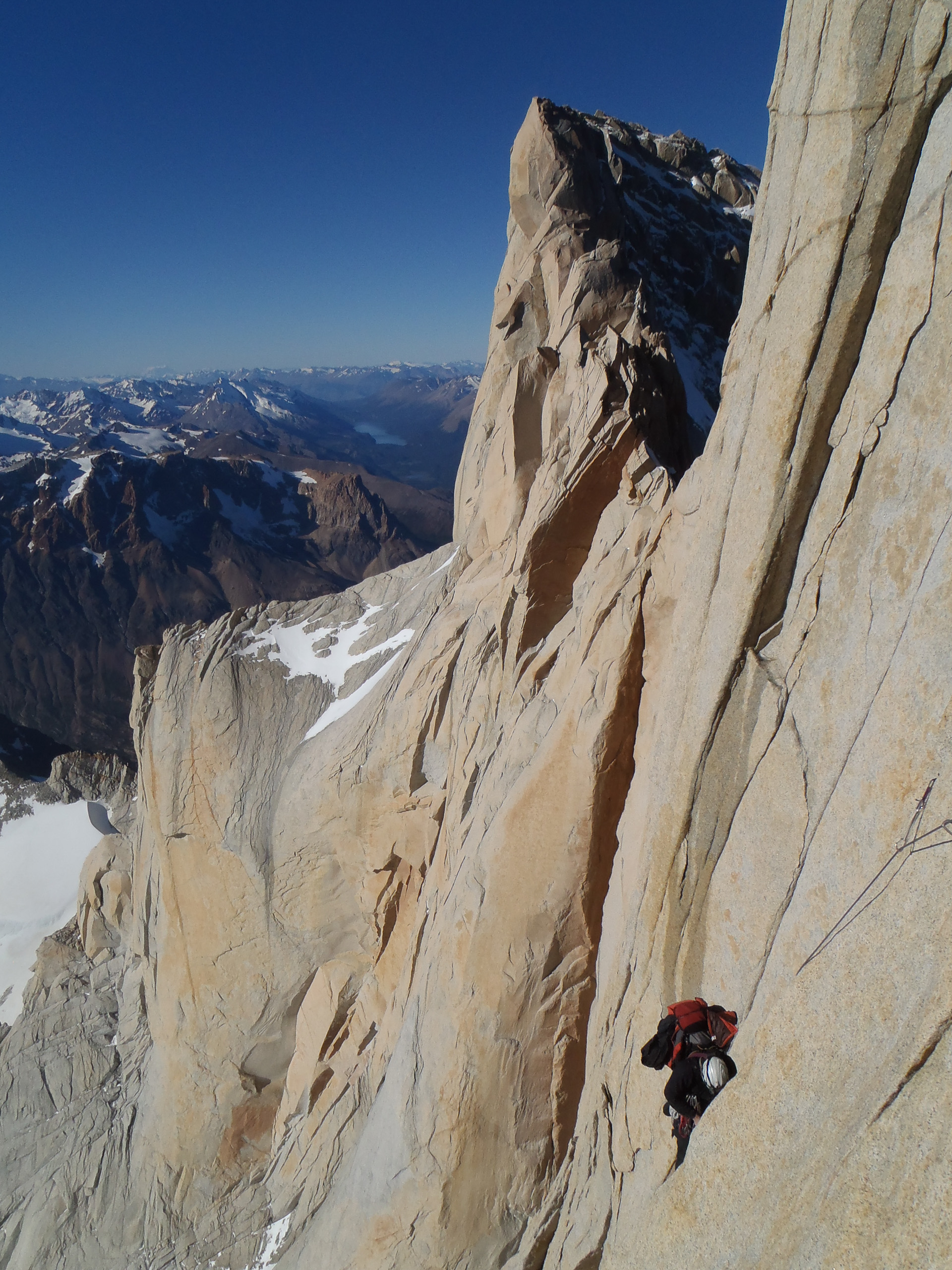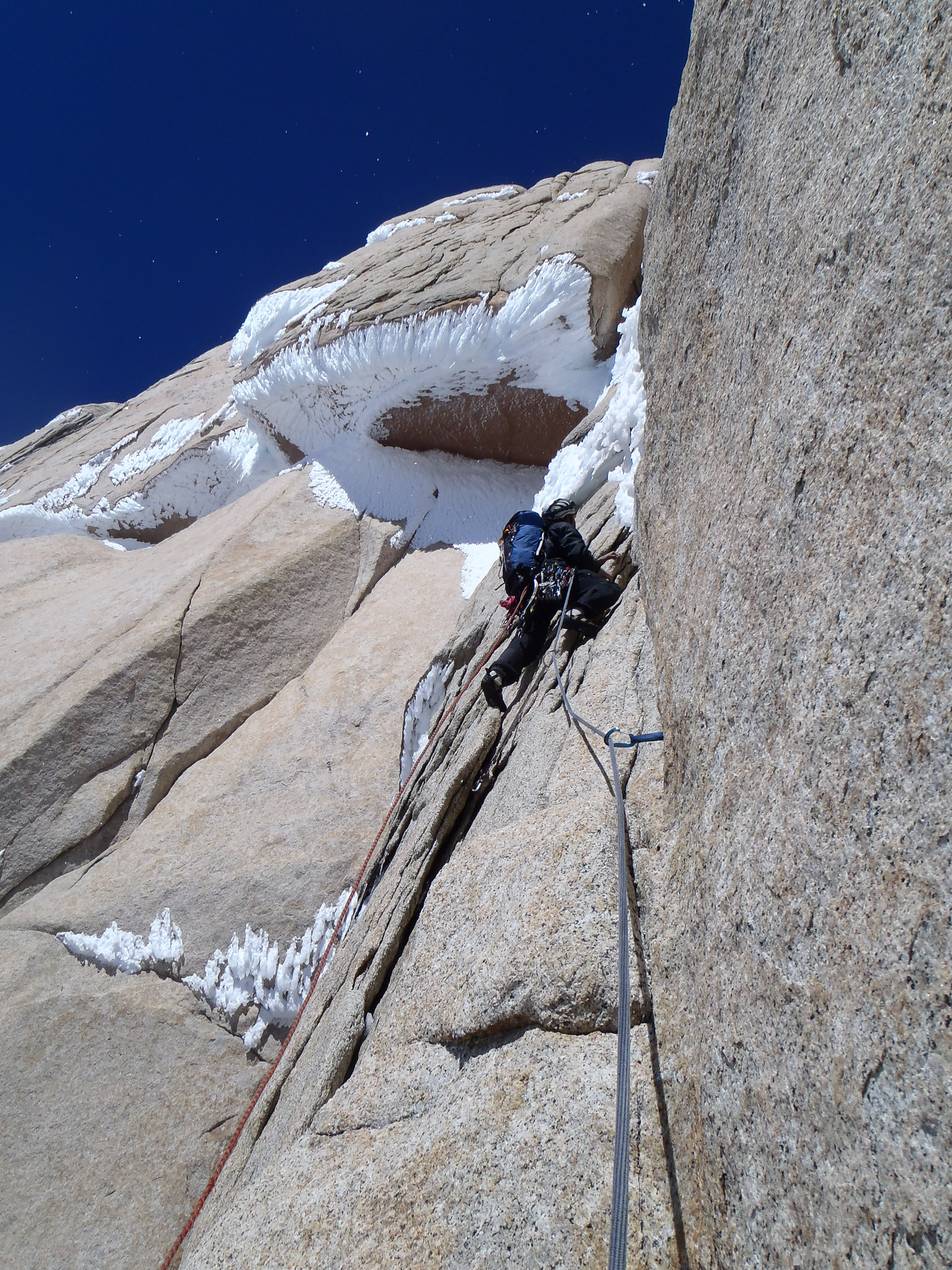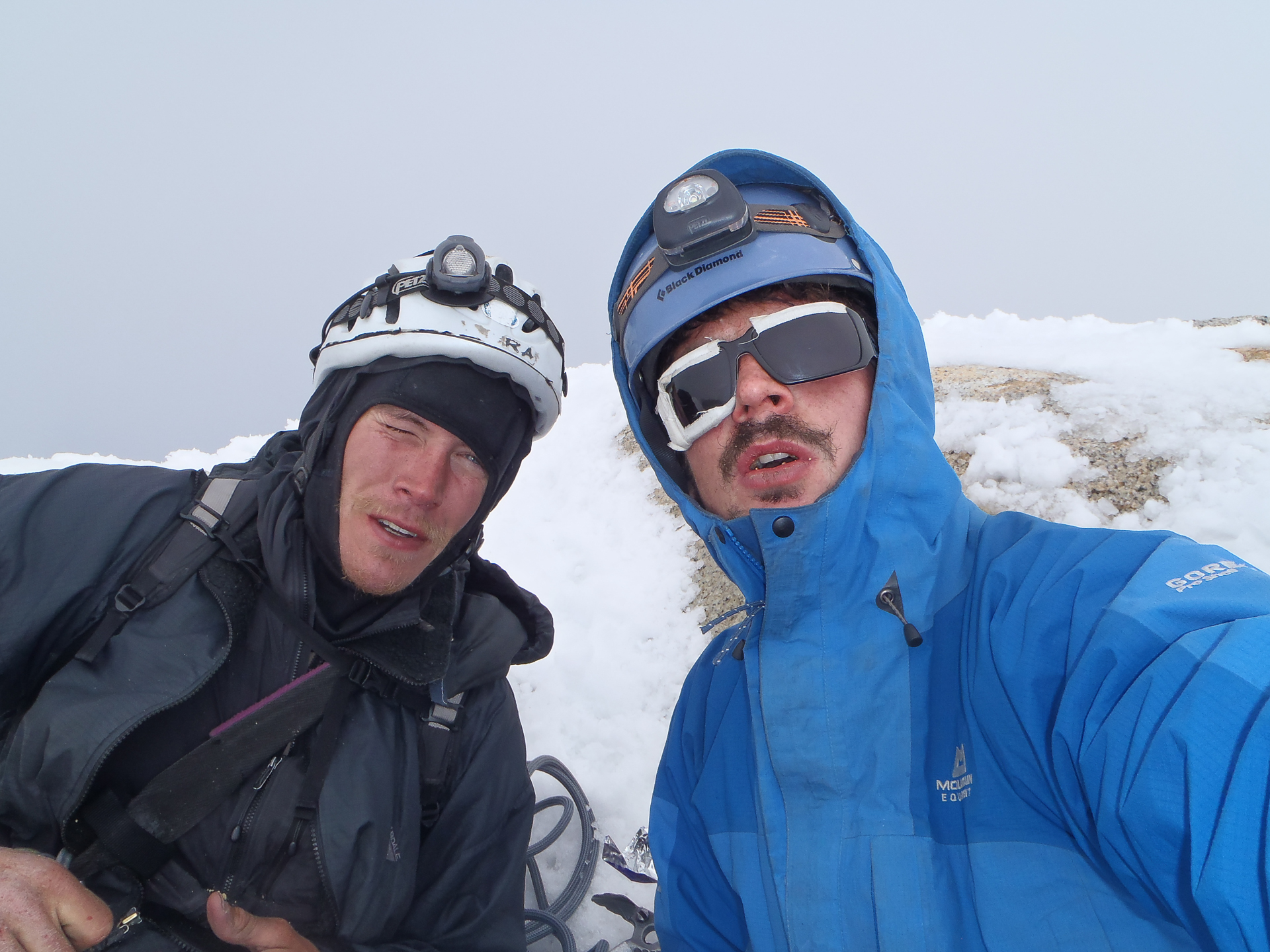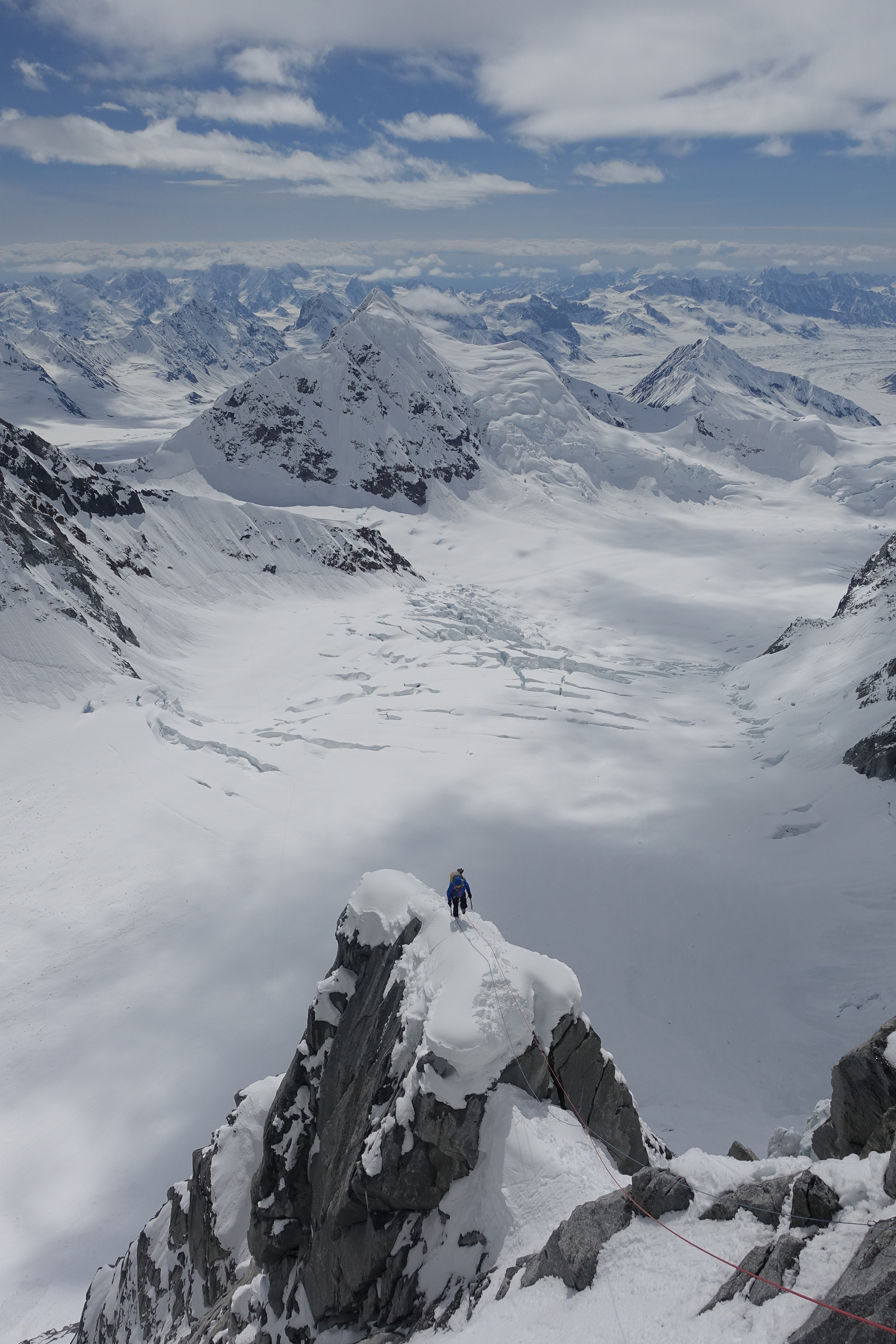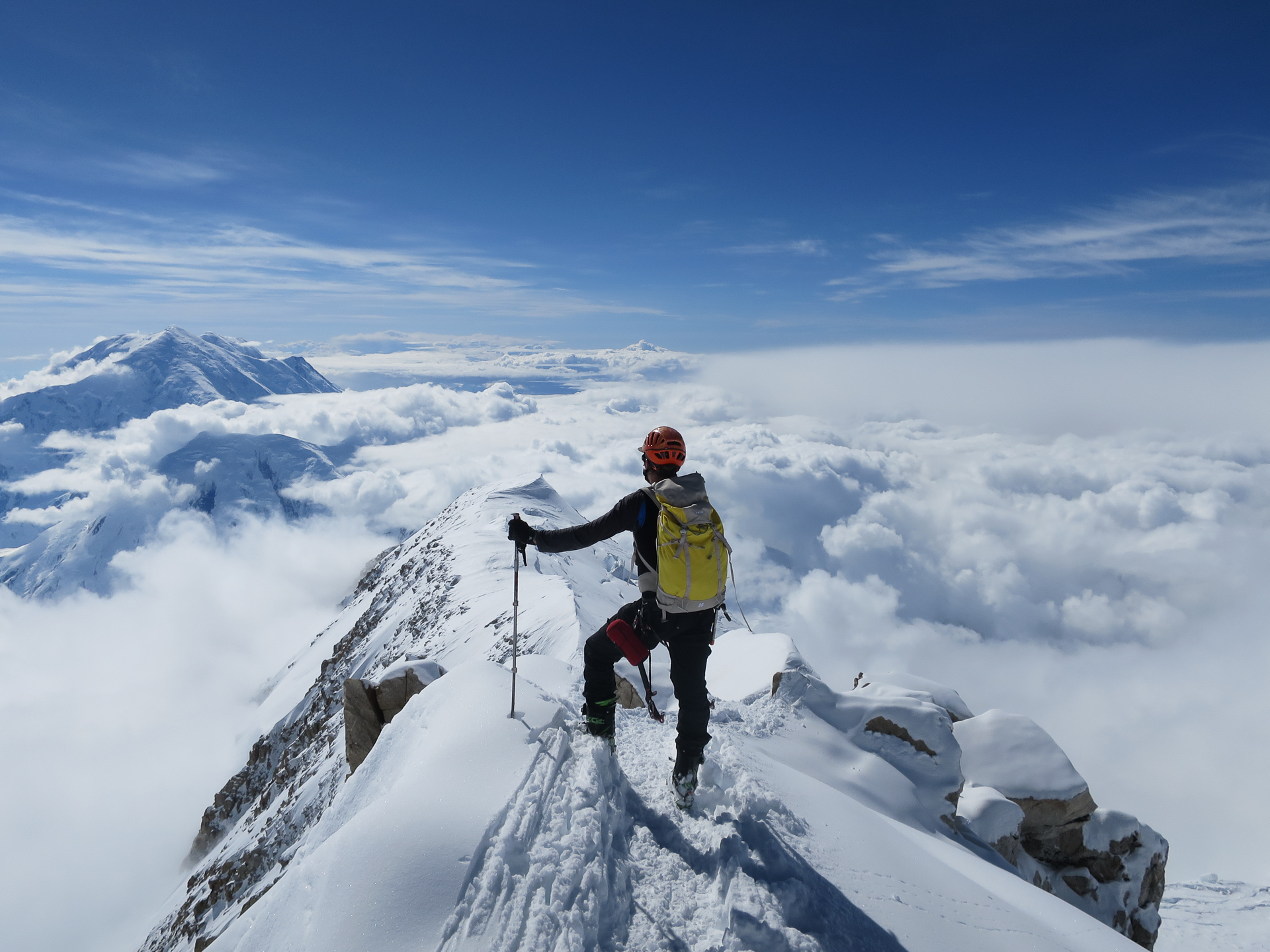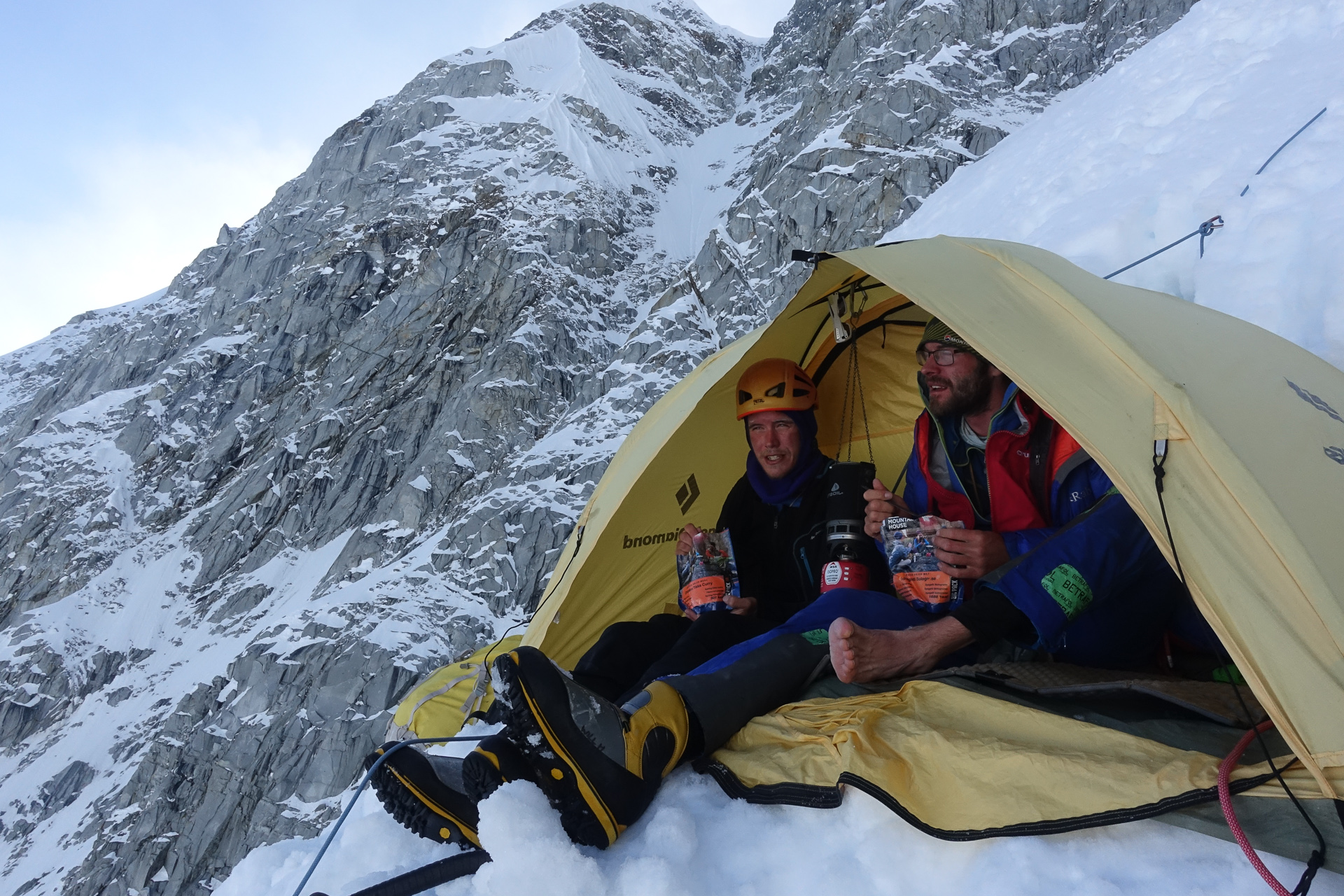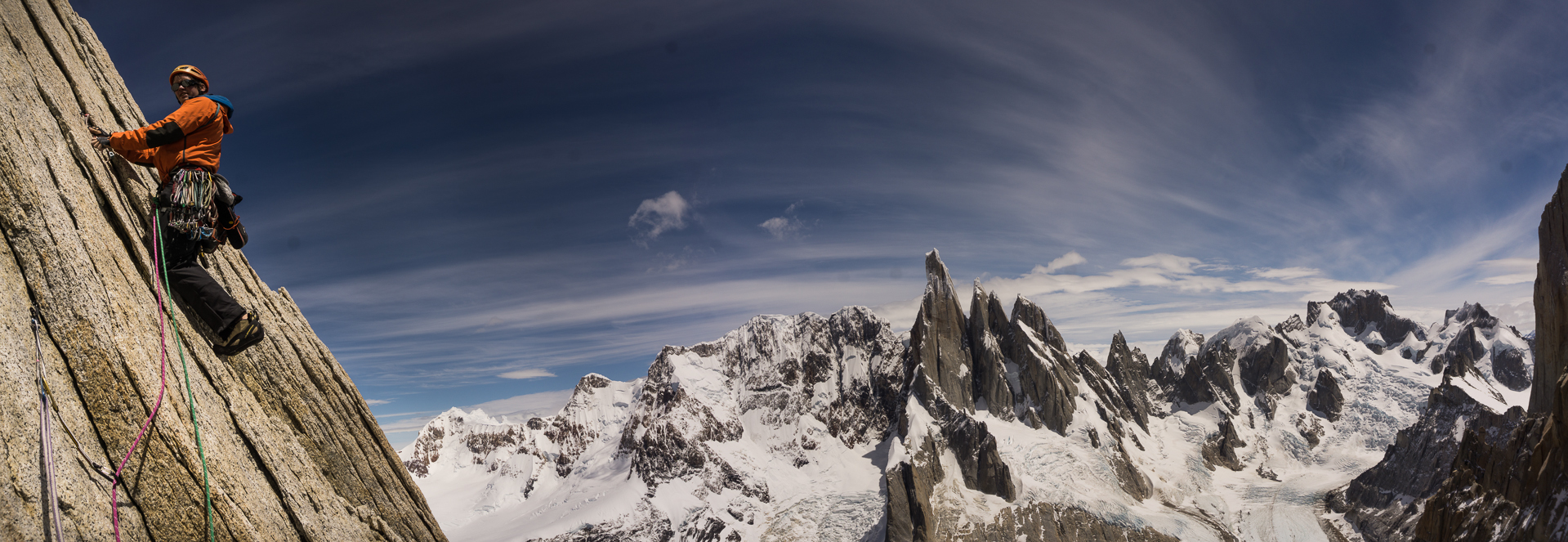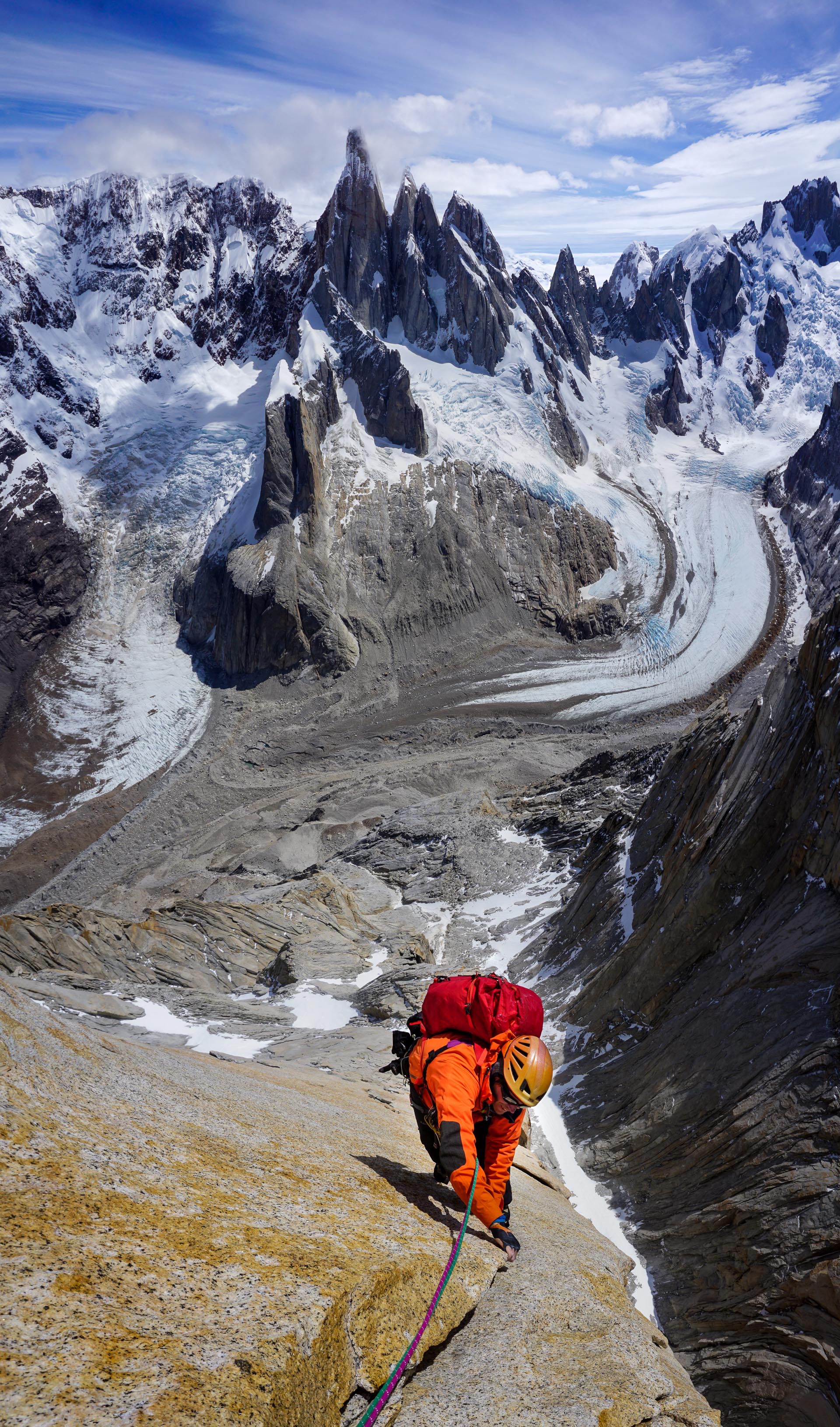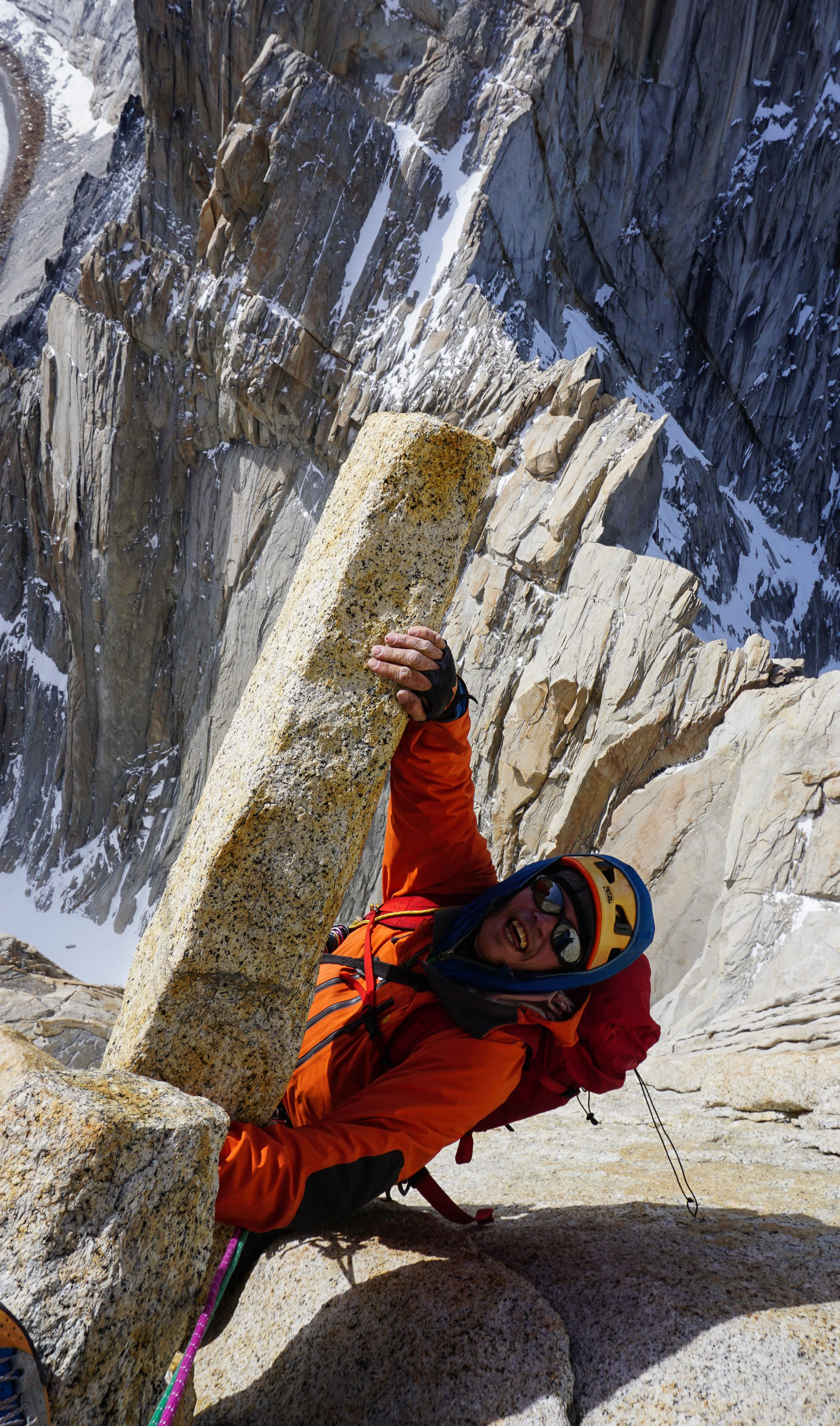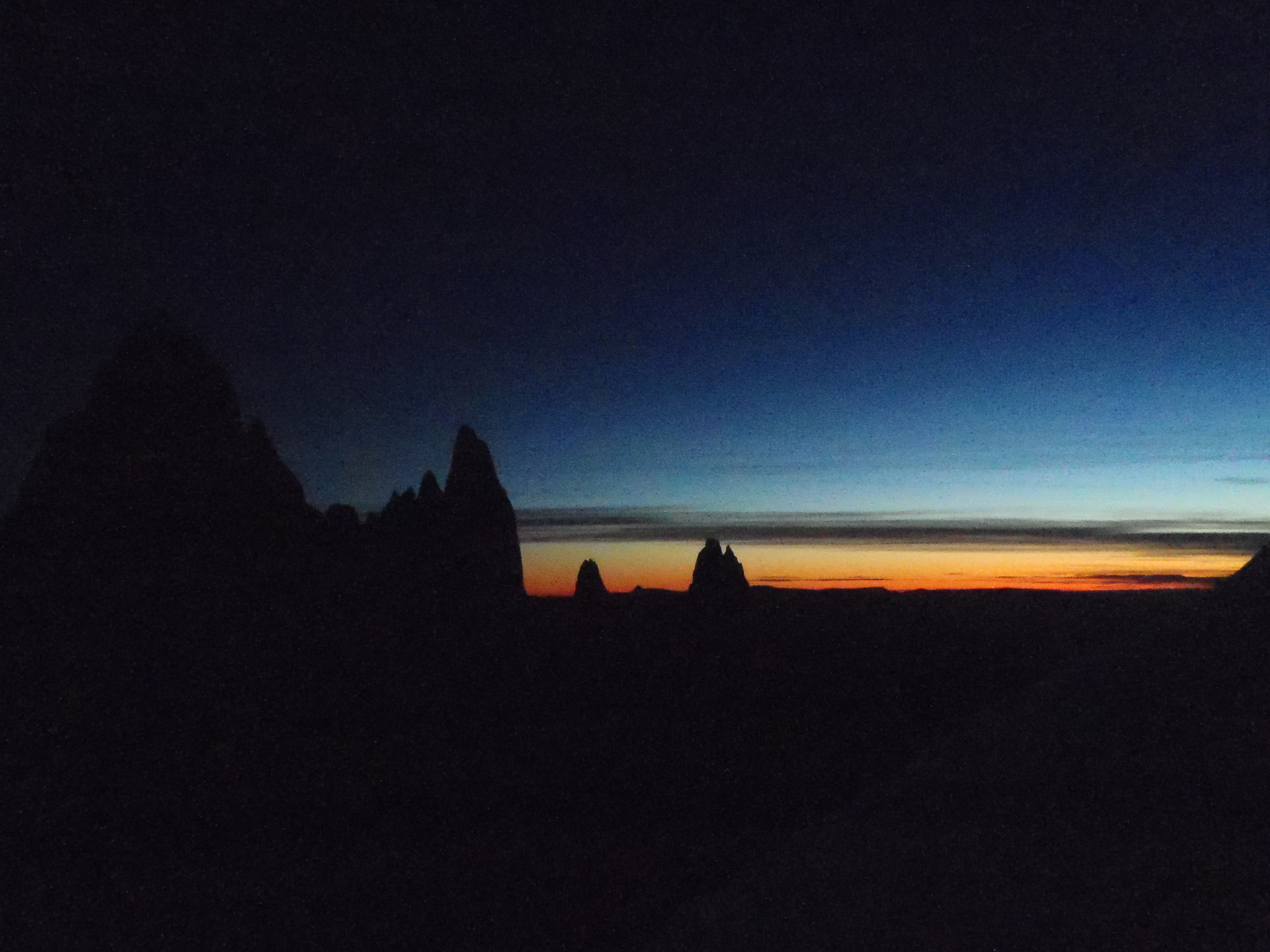Pete Graham was halfway up the tallest of Cerro Fitzroy’s rocky pillars when the ice bombardment started. The mountain’s jagged granite pinnacles, which sprout vertically from the glacier like giant stegosaurus spines, have made it one of South America’s most recognisable landmarks. They’re also catnip for serious climbers. But the length of the approach, combined with the often-brutal Patagonian climate, means scaling them is far from straightforward.
“There’d been so much bad weather a lot of ice that had formed near the top of the pillar,” Pete tells Mpora. “This sort of rime ice that you get in Patagonia, it forms because of the wind and moisture. It started melting off in the heat of the afternoon so we were getting bombarded by some quite big chunks. I remember just getting hit on the head by this sort of melon sized block of ice, and kind of like going a bit dizzy…”
“You’re 100 miles from anyone [and] I find that quite liberating. You know there’s not much chance of being rescued, so it’s all on you”
It was day two of the three-day climb, the final mission of a gruelling six-week long trip which had seen Pete and his long term climbing partner Ben Silvestre bag a couple of significant Patagonian peaks, but also suffer several exhausting defeats that had taken it out of them physically. By this point in the climb they were suffering. “Our battered shoulders begin to ache, our tired limbs hang heavily by our sides,” Ben writes in his expedition report.
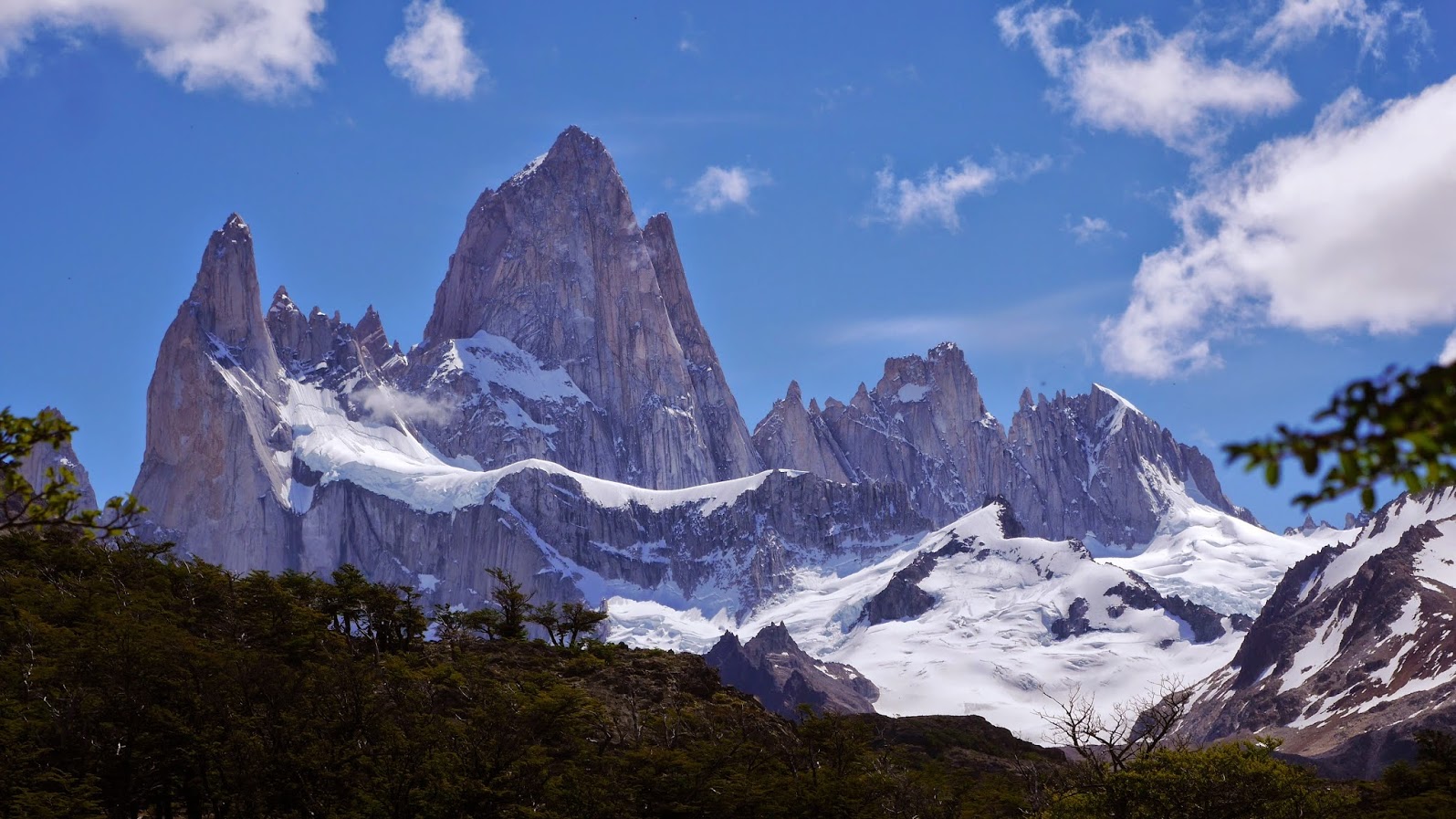
Most people would consider taking blocks of ice to the head while clinging to a Patagonian cliff a pretty scary experience. Yet incredibly Pete begins this story by saying “Well, I haven’t really done anything super sketchy…” and it takes a bit of prompting to persuade him to tell it at all.
